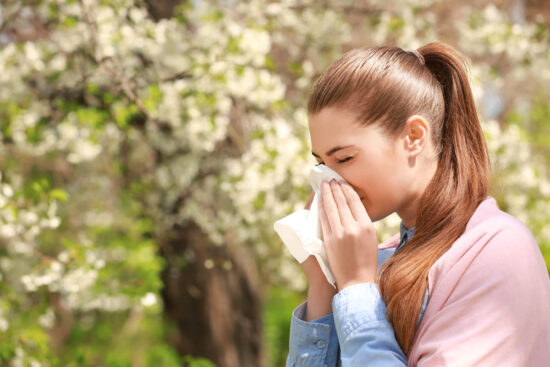How to Deal with Extreme Pain in Breast
If you experience pain in breast issues, then you know it can be a real pain (literally), and it can be hard to handle. Here’s what you need to know about breast pain, including potential causes and tips to help ease that pain.
2022-02-04T01:03:00+00:00
According to the National Breast Cancer Foundation, “breast pain is any discomfort, tenderness, or pain in the breast or underarm region, and it may occur for a number of reasons.” So is this pain something you should worry about? Well, it depends on the cause of the pain (more on that below), but the NBCF continues to say “generally, breast pain is not a sign of breast cancer.” Phew. If your lady lumps aren’t feeling so hot, you can breathe a sigh of relief right about now.
The roots of breast pain

Moving on…before we talk about how to deal with this pain, it’s crucial that you recognize the cause of your discomfort. And there are several potential reasons your boobs hurt. For starters, you could just be getting your period. That’s right, another pesky side effect of your monthly visitor is breast pain thanks to your changing hormones.
As ABC reports, Dr. Robin Smith from Mayo’s Breast Diagnostic and Cancer Clinic explains that one of the most common types of breast pain is “called cyclic mastalgia, and this is pain that is associated with the menstrual cycle. Typically a woman’s symptoms start within the two weeks prior to her menstrual cycle, worsening until the onset of her menstrual period, and then they tend to get better. Some women have pain throughout the entire month, but it improves and worsens according to the time in the cycle.”
The clothes you wear to take care of your breasts

Breast discomfort is also common in women with fibrocystic breast tissue, more commonly known as lumpy breasts. Don’t worry, they don’t look lumpy, it just “means that your breast tissue is lumpy and prone to swelling.” And unfortunately swelling usually means discomfort. Another possible cause of pain in breast has nothing to do with your actual breasts, but rather what you wear on those breasts.
If you notice breast pain every day, you could be wearing the wrong bra. Turns out that lingerie isn’t just meant to be pretty or sexy, but it also needs to be functional and well fitting. As Women’s Health reports, Dr. Taraneh Shirazian, M.D., assistant professor of obstetrics, gynecology and reproductive science at the Icahn School of Medicine at Mount Sinai in New York, explains, “the wrong lingerie can have pretty serious consequences for your chest.
Other considerations

If your bra is too tight or the cup is too small, the underwire may be pushing against your breast (All. Day. Long.), leading to sore boobs.” Beyond that, if you are wearing a bra with insufficient support your breasts could also suffer the consequences. And when you workout the same rule applies. Make sure you wear a sports bra that offers enough support so that your boobs don’t bounce, which could result in pulling of breast tissue and intense pain.
There are other possible causes, ranging from puberty or menopause (depending on your age and life stage), to caffeine intake (too much is not a good thing), to a pulled muscle or childbirth and breastfeeding. First you need to figure out what is causing your pain, and then you can figure out your best options to help alleviate that discomfort with these tips and tricks.
Vitamins

Sometimes soothing breast pain is just a matter of taking some daily vitamins to help manage your hormones and reduce swelling. “Vitamin E is fat-soluble vitamin that serves as an antioxidant. Antioxidant properties can help protect your body’s tissues, including breast tissues, from damage that occurs as the results of free radicals.
Vitamin E can also help reduce inflammation that cause pain and tenderness in your breasts.” It’s also a good idea to load up on vitamin B-6, which “works as a diuretic and may help reduce levels of the hormone prolactin (which stimulates the breast to produce milk), according to Dr. Mary Jane Minkin, MD, a clinical professor of obstetrics and gynecology at Yale School of Medicine.
Pain Medication

An anti-inflammatory, over-the-counter pain medication may help reduce breast discomfort, soothe your breast muscles and relax your breast tissue, so you can feel better. Take the recommended dosage, and if that doesn’t work try combining that medication with heat from heating pads or a hot shower, to further help muscles relax.
Try Primrose Oil
If you’re looking for a more natural source of relief, you can try a primrose oil supplement each evening, which has been shown to ease soreness and reduce breast pain.
Cut Caffeine

We know most coffee-lovers won’t be such a fan of this tip, but the reality is that caffeine can cause, or exacerbate breast pain, especially with women who have fibrocystic (lumpy) breast tissue. Alyssa Dweck, M.D., OB-GYN and author of V is for Vagina, says “caffeine can make breasts more cystic and tender,” and while the caffeine might not cause the pain, cutting it out of your daily diet could help ease that discomfort.
Be Patient and Gentle with Your Body
Above all, listen to your body, be patient and be kind. Sometimes breast pain is just a sign that you need to relax and allow your body time to recover and chill. If you’re suffering from PMS, then be patient—this pain usually passes in a few days, or at the end of your period. If none of the pain management tips help, if time doesn’t soothe your soreness, if you notice any other alarming symptoms (think a lump, bruising, your nipple is leaking etc.) then definitely go see your doctor for a thorough breast check to make sure you don’t have a more serious condition.
The post How to deal with intense breast pain appeared first on Hispanic World.
 Related post
Related post





